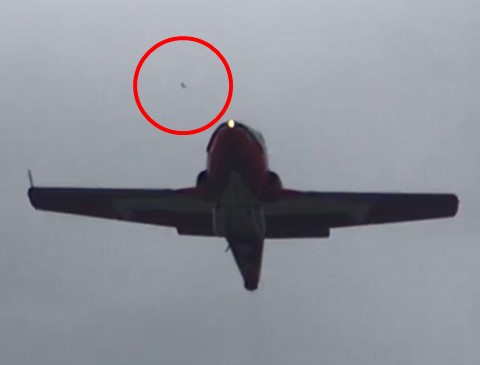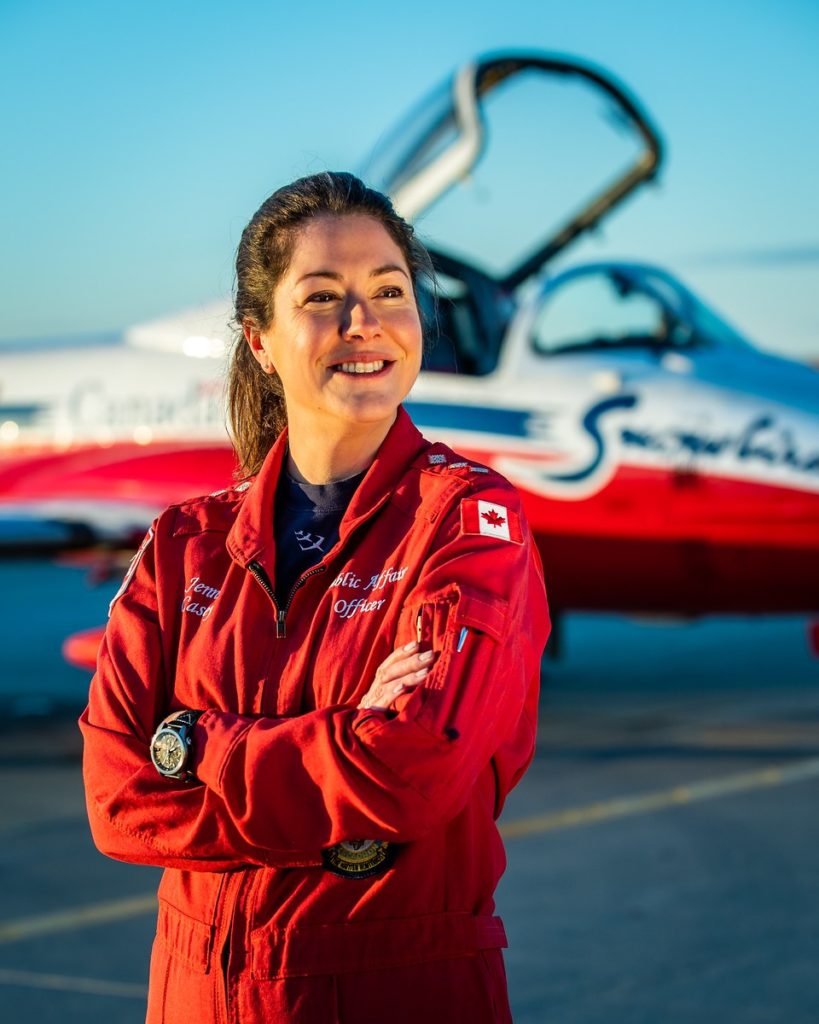Estimated reading time 5 minutes, 45 seconds.
The investigation into the May 17, 2020, accident involving a CT-114 Tutor aircraft of the Canadian Armed Forces Air Demonstration Team (Snowbirds) near Kamloops, British Columbia, has determined that a single, small bird was ingested into the engine of the aircraft, “Snowbird 11,” following take-off, which resulted in a compressor stall and a loss of thrust. The crash claimed the life of Capt Jenn Casey, Snowbirds public affairs officer, and injured Capt Richard MacDougall, Snowbirds pilot.

The aircraft, which was number two of a formation of two Tutor aircraft, was enroute to Comox, British Columbia, to reposition in support of Operation Inspiration.
The Flight Safety Investigation Report, completed by the Royal Canadian Air Force’s (RCAF’s) Directorate of Flight Safety, says following the take-off, a loud, impact-like sound was heard by both MacDougall and Casey, and the aircraft then experienced a loss of thrust. “The pilot initiated a climb straight ahead and then elected to carry out a left-hand turn back towards the airport. The maneuver resulted in an aerodynamic stall halfway through the turn before the pilot gave the order to abandon the aircraft. Both occupants subsequently ejected and the aircraft was destroyed upon impact in a residential area.”
DNA evidence collected from the engine’s internal components confirmed a bird was ingested; however, “the damage it caused was insufficient to cause a catastrophic failure. Rather, it resulted in a compressor stall that was never cleared.”
The report suggests that both occupants’ ejection sequences were outside of the ejection envelope: “The pilot and passenger ejected from the aircraft at low altitude . . . neither the pilot nor the passenger had the requisite time for their parachutes to function as designed.”
Col John Alexander, director of flight safety, RCAF, said: “Snowbird 11’s power loss could not have come at a worse time – low altitude, low airspeed, proximity to another aircraft, and in the vicinity of a built-up area. This tragic accident reinforces the importance of continuous, situation-specific training to minimize reaction time in an emergency and the importance of a timely decision to eject.”
BGen Denis O’Reilly, commander 2 Canadian Air Division, RCAF, added: “The Royal Canadian Air Force prides itself on operational flight safety; however, we recognize the inherent risk with military flying, despite the tireless work of our team of professionals to safely operate and maintain our aircraft. In emergency situations, pilots must make split-second decisions after quickly processing a lot of information, while at the same time dealing with high levels of stress, g-forces, and other challenging environmental factors in the cockpit.
“We are dedicated to learning from this accident and welcome the flight safety recommendations to minimize the chance of a repeat occurrence.”

Recommendations in the report identified the need to conduct additional training for CT-114 aircrew to better prepare them for an engine failure after take-off in a low-level environment; clarify the command to “eject”; publish a directive to clarify how aircrew should prioritize an ejection-scenario near or over a populated area; and research potential options to stabilize the ejection seat from any tendency to pitch, roll, or yaw.










